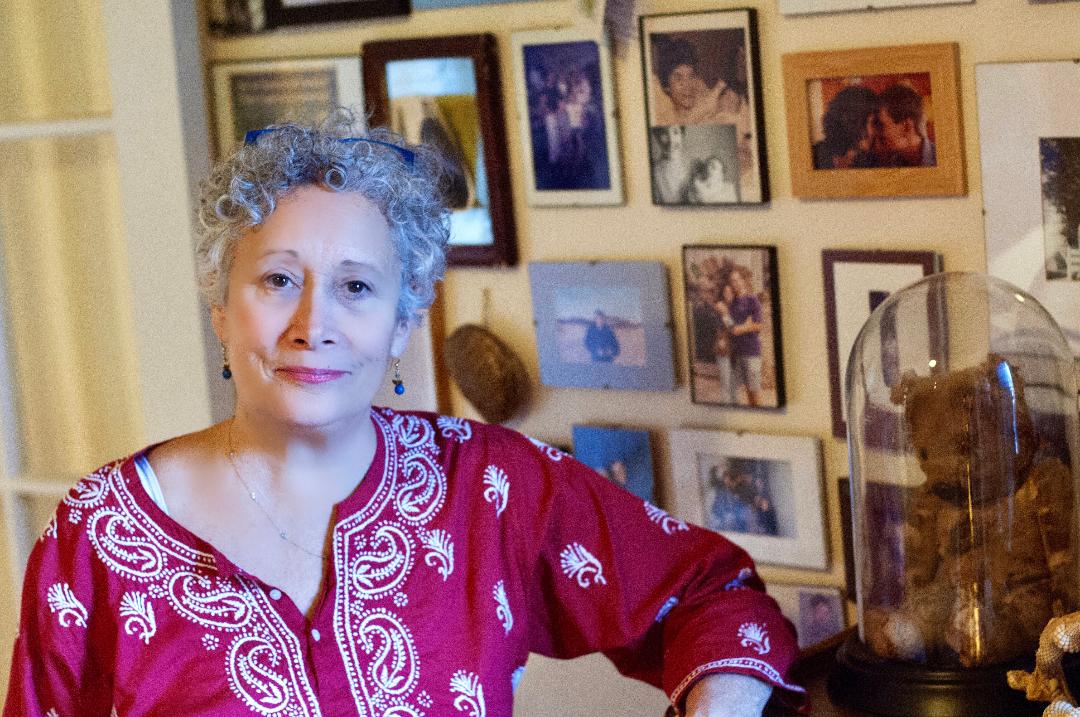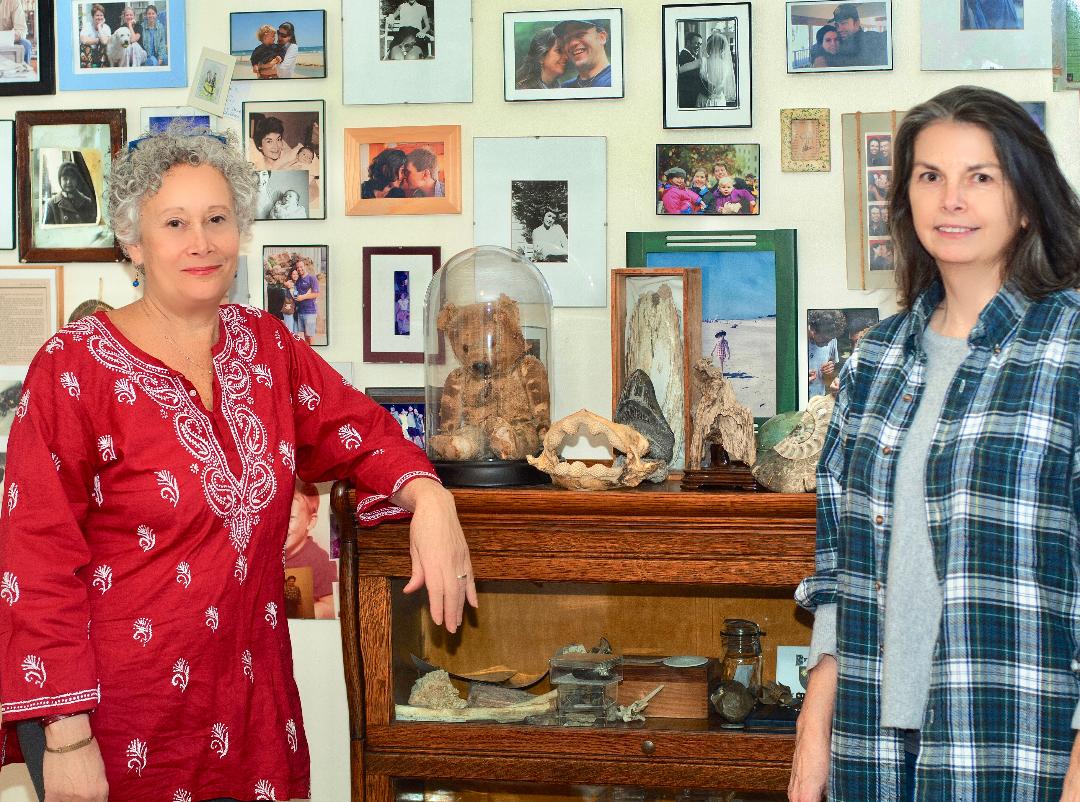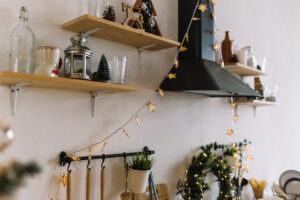
Interior designer Ruthie Kukoff considers herself a kind of life coach.
The task of organizing and and streamlining a small New York City apartment can seem to call for a complete purge. But for interior designer and decluttering expert Ruthie Kukoff, whose clients include “Hamilton” mastermind Lin-Manuel Miranda, straightening up is about much more than just getting rid of things.
“I want to shift the energy in the home,” says Kukoff. “This isn’t about being minimal; it’s about what makes you happy when you walk in your door and when you look at your home.”
Recognizing that the chaos of clutter can impact individuals’ productivity, well-being, and relationships, Kukoff considers herself a sort of life coach. Her ultimate goal is to help clients achieve space in their minds as well as in their homes.
Taking the Time to Listen
Writer and environmentalist Fiona Brady has been working with Kukoff in three-hour sessions every few weeks, to organize the Fieldston home she shares with her husband, a paleontologist. Brady says the designer immediately put her at ease. “It’s a big deal to invite a stranger into one’s overcrowded, disorganized, infrequently dusted home to shine a light on it all,” she says. “My husband and I are collectors. Our small 2-bedroom is filled with artifacts, fossils, memorabilia, hundreds of books, camping gear, art supplies, rescued furniture, an astonishing amount of unused lumber, and paper — so much paper.
“Taking stock of all that one’s amassed — and why — can be pretty overwhelming. But Ruthie is both methodical and gentle. She inquires, but doesn’t pry. She keeps us moving toward our goals, but doesn’t push so hard that we dread the work.”
Kukoff understood that many of the items in Brady’s home were imbued with meaning, so rather than give them away or store them out of sight, she created “an organized museum” where Brady could enjoy her collections without them taking over her home.
While Kukoff espouses a philosophy similar to other decluttering pros — keeping bags and boxes at the ready for donations, consignment, gifts, and garbage — years spent working as an arts intervention specialist for at-risk teens at Mount Sinai St. Luke’s Hospital taught her the need for a therapeutic touch.

Kukoff helped Fiona Brady organize the 2-bedroom apartment Brady shares with her husband, a paleontologist.
“When needed, we sit and talk,” says Brady. “And laugh. Sometimes even get a little teary — me, that is. It’s early days yet, but there’s a bit of magic that happens when you can step back and see your old, too-familiar home in a new light, and imagine what it might be. Ruthie’s made that happen.”
Creating a Vision
When clients don’t have a clear idea how they want their homes to look, Kukoff draws upon her artistic background and encourages clients to create vision boards that help them see both potential and possibilities.
“First, I say, ‘Close your eyes for five minutes and visualize yourself outside the front door. Picture yourself opening it and walking into your house or your foyer. What do you want to see? Be specific. Think about the color, the furniture. It becomes a dream for them. They start to envision pale yellow walls; maybe they can see an area where their child is playing with Legos. They create that moment that makes them feel good about themselves and their apartment.”
From there, she encourages clients to write down what they saw, which makes the images even stronger in their minds. Next, they create vision boards with magazines, scissors, and glue sticks.
“Put it up in a place you can see it everyday,” she suggested. “Look at it and create your own affirmation: ‘This is what my home is going to look like.’”
Kukoff also uses mediation, music, and — depending on a client’s spiritual journey — a smudge stick to help purify the space.
Preparing to Downsize
Much of Kukoff’s business focuses on helping clients prepare to downsize. Sara Lavner, a psychotherapist, began working with Kukoff eight months ago to get ready for her move from a 2-bedroom apartment in Lower Manhattan to a 1-bedroom on the Upper West Side.
“She had a warm, understanding approach to help me see what I really needed and what I didn’t,” Lavner says. “Her instincts are great; she made organizing and throwing out so understandable.”
Among Kukoff’s clients are busy families that have little time to keep up with documents, toys, and other items that clog up space. While some clients feel that the loss of order in their home means there’s something wrong with them, Kukoff assures worriers that they’re no different from anyone else. They just require a bit of assistance.
“Whatever they need — before, during and after — I’m there for them,” she says. “For me, it’s watching them go from feeling frustrated to mentally healthy. Many say they feel like they have their feet on the ground again when I leave.”
Before getting started with a client, Kukoff does a free consultation to look at the scope of the project and outline a plan. On that first visit, “I always offers something,” she says. “Maybe it’s ‘Move this,’ or ‘You’re in great shape, just do this.’ I always leave them with a lot of feedback.”
But, recognizing that tackling clutter is considered a daunting task by most, Kukoff said she tries to make the process “anything but serious.”
“Of course, there are emotional times, because items have history and some may bring up sadness, but for the most part I try to make it fun,” she says. “It’s so much more than just decorating. My clients tell me they feel transformed after I leave. It opens them up and they’re able to move forward.”
—
Hey, why not like StreetEasy on Facebook and follow @streeteasy on Instagram?
Related:









